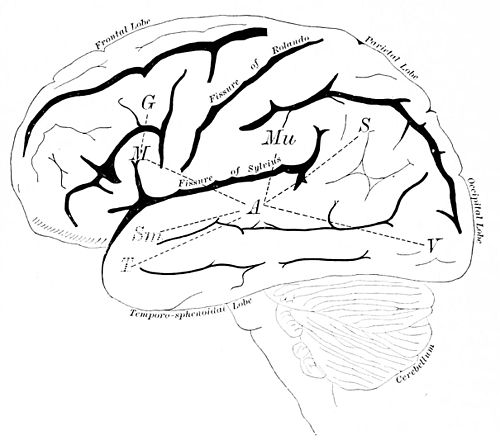use of language are the subject of a large and very important chapter in the treatises on brain disease. So far as I am aware no practical use has been made of this knowledge outside the domain of medicine. Yet it would be very strange if, from the ways in which the use of language is lost, or suffers varying degrees and kinds of impairment, we could learn nothing as to how it may best be acquired. The loss occasioned by the destruction of any language center is an indication of the defect that must result from neglecting to cultivate the same center by practice; and, as disease selects now one and now another center for attack, we

Diagram of the Left Side of the Brain. (Modified from Ecker.) A, auditory center; M, motor speech center; V, visual center; G, writing center; Sm and T. probable centers for smell and taste (dotted because on inner surface); S, provisional location of areas for perception of touch, pain, and temperature; Mu, provisional area for muscular sense.
learn the extent to which each is necessary in hearing, speaking, reading, or writing.
In the accompanying diagram of the left side of the brain, the areas marked A, M, V, and G are the four language centers. The dotted lines indicate the paths of fibers which connect them with one another and with other centers, carrying nervous impulses somewhat as a wire carries an electric current. The corresponding centers on the right side of the brain are for the most part rudimentary, and may for the present purpose be neglected.
The auditory center, A, receives the nervous impulses started

